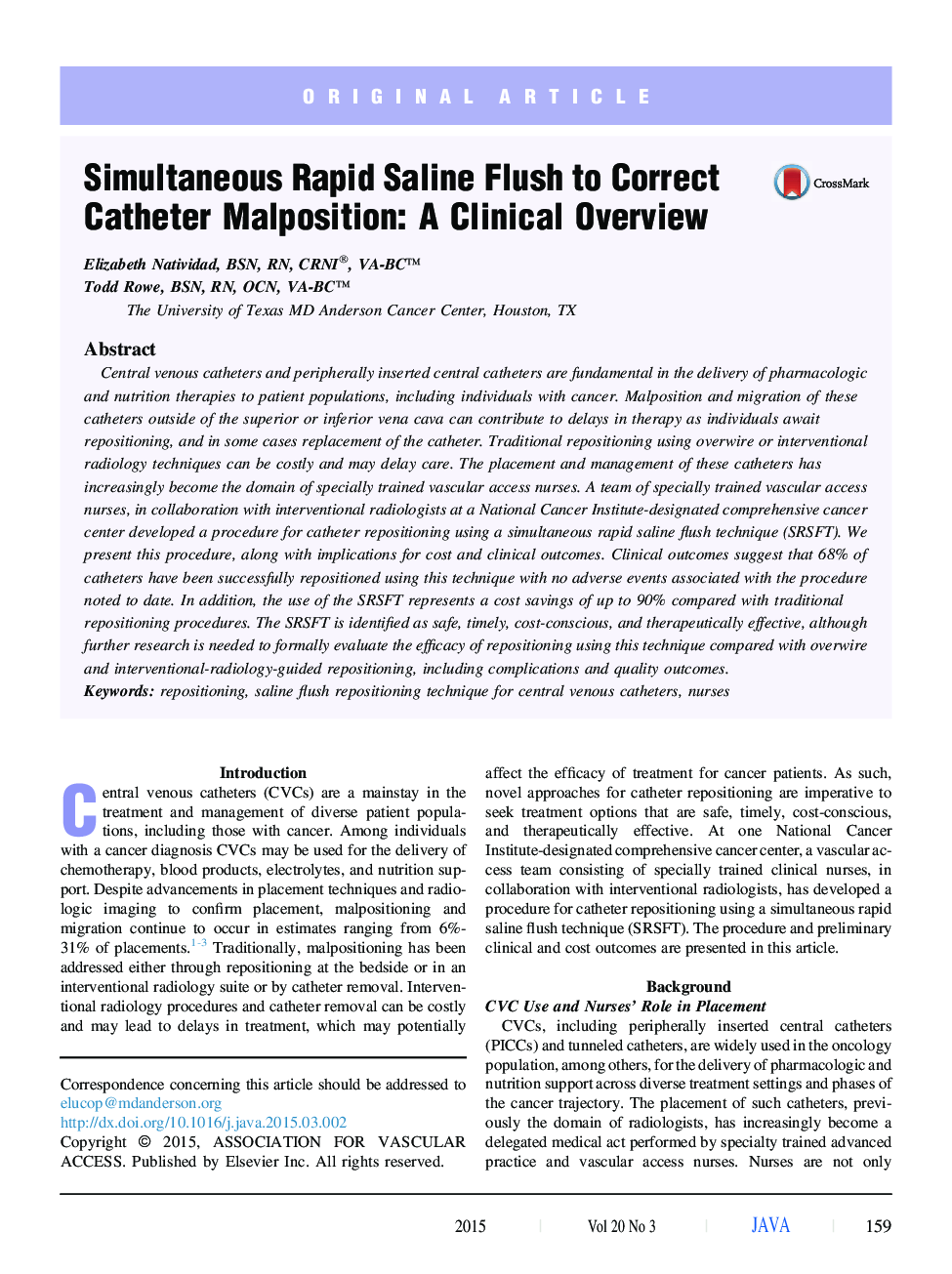| Article ID | Journal | Published Year | Pages | File Type |
|---|---|---|---|---|
| 5870373 | Journal of the Association for Vascular Access | 2015 | 8 Pages |
Central venous catheters and peripherally inserted central catheters are fundamental in the delivery of pharmacologic and nutrition therapies to patient populations, including individuals with cancer. Malposition and migration of these catheters outside of the superior or inferior vena cava can contribute to delays in therapy as individuals await repositioning, and in some cases replacement of the catheter. Traditional repositioning using overwire or interventional radiology techniques can be costly and may delay care. The placement and management of these catheters has increasingly become the domain of specially trained vascular access nurses. A team of specially trained vascular access nurses, in collaboration with interventional radiologists at a National Cancer Institute-designated comprehensive cancer center developed a procedure for catheter repositioning using a simultaneous rapid saline flush technique (SRSFT). We present this procedure, along with implications for cost and clinical outcomes. Clinical outcomes suggest that 68% of catheters have been successfully repositioned using this technique with no adverse events associated with the procedure noted to date. In addition, the use of the SRSFT represents a cost savings of up to 90% compared with traditional repositioning procedures. The SRSFT is identified as safe, timely, cost-conscious, and therapeutically effective, although further research is needed to formally evaluate the efficacy of repositioning using this technique compared with overwire and interventional-radiology-guided repositioning, including complications and quality outcomes.
